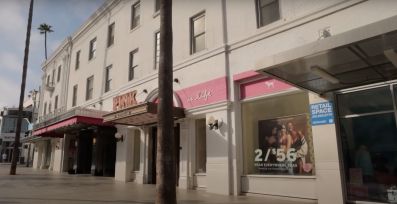Rebecca Eby of Studio Noveau Photography in Wisconsin, recently returned from a life altering service photography assignment at the Lotus Children’s Home Orphanage in Kathmandu, Nepal. Sounds like a pretty interesting adventure, right? After viewing the photos from her trip, a few things came to mind. Like, “How does a portrait photographer from Wisconsin end up in Nepal taking pictures at an orphanage?”
The short answer? Rebecca is somewhat of a philanthropist. Each year she donates sessions and time to several non-profit organizations in her area. Her love of travel and of “giving back”, prompted her to seek out a service opportunity across the globe. Read touching details about her trip in our interview below.
[Rewind: Photographers Offer Free Sessions to Women Affected by Breast Cancer]
Tell me a little bit about yourself and your work.
I’ve been photographing weddings and portraits since 2006 and bought my first (film) SLR camera in 2000. I particularly love travel and street photography, though I haven’t yet found a way for that to pay the bills!
How and why did you first become involved with Photographers Without Borders?
One day I was browsing in a Facebook group, and one of the ladies was asking how we use our photography to REALLY make a difference. I realized that I enjoyed my volunteer photography projects but wanted something even more meaningful. So, after thinking about what my priorities are, I decided I wanted to find a way to photograph an orphanage in a third world country.
My husband and I are trying to adopt (domestically) and I’ve always had a heart for foster children and orphans. So to me, using my camera to improve the lives of these special children would be the ultimate way for me to help. Immediately I did a Google search and Photographers Without Borders (PWB) was one of the top results. I found the project in Nepal which was a country I’ve wanted to visit since I was a child. Within 20 minutes I had applied and had this crazy feeling that I would be going to Nepal sometime this year. Two weeks later I had my interview and a few days after that I got the message that I’d been chosen to go.
Are projects through Photographers Without Borders paid or do you donate your time and have to pay for your travel expenses?
They are completely volunteer projects. I donated my time and did fundraising to pay for my airfare and program fee. Ultimately I did spend some of my own funds to make it happen, but thankfully I have very generous friends and family.
Was your trip to Nepal and The Lotus Children’s Home Orphanage assigned to you or did you have a say in where you would go?
With PWB, you select your top three choices of projects from their current list. This project in Nepal was my #1 choice.
Were you given specific art direction for your assignment or just showed up and documented your experience? Did you travel with companions?
This project had very little direction and was open to my interpretation. My mission was to document the lives of the children at Lotus Children’s Home, and also to take a series of portraits. Other than that, it was pretty wide-open for interpretation. I traveled by myself to Nepal and stayed with a host family. My host family was actually the family that runs the orphanage and they were wonderful. It was amazing to see how Nepali families live and be a part of their every day lives. I also hired a wonderful guide for some of my free time while in Nepal so I could experience more of the local culture.
What challenges did you face on the trip?
I’m a fairly adventurous traveler but this was a tough trip for me. Kathmandu is one of the dirtiest places I’ve ever been to. In fact, everyone wears face masks just to walk down the street. The smells were overwhelming. Even in the middle of this large city, most homes did not have running water and would draw (undrinkable) water from a well nearby for washing. Any drinking water needed to be filtered or purchased. Clothes were washed by hand and power was sporadic due to unscheduled power cuts. This made refrigeration very rare and there was not a system for disposing of garbage, which we take for granted here in the states.
I badly sprained my ankle in a 14th century Newari village and was then able to experience a local hospital. I was so incredibly thankful I didn’t break my ankle! On the positive side, my hospital visit plus x-rays and a brace cost only $6.50. Plus, I ended up getting a bit of a stomach bug toward the end of my trip. The restrooms were actually “squat toilets” that are typical of eastern countries and showers were available only if I stayed in a hotel, so that was a challenge to get used to as well.
Was the trip rewarding professionally and personally? In what other ways did it benefit you?
In spite of all the challenges I mentioned, this was one of the most rewarding trips I have ever taken. Above all, these amazing people helped me appreciate what really matters in life: being loved, having a family, and the simple things like having a roof over my head and food to eat. Even now, a few months after my trip, I still marvel that I have a refrigerator, running water, and can brush my teeth with tap water. That, my friends, is good, good living! We are so fortunate.
This trip also helped with perspective. Sometimes it’s so easy for our western society to fall into consumerism and want so many things… electronics, more clothes, etc. But the kids I was working with? They had very little and were so incredibly happy. When I have a bad day, I think about them and it’s a mood-lifter.
Lastly, this project turned all of my preconceived ideas about orphanages upside-down. This orphanage was amazing. In every way that mattered, the family running the orphanage and the children living there were a family. They make sacrifices for each other, have so much love, and radiate happiness. In a country like Nepal, I believe the Lotus Children’s Home has saved the lives of the children living there. I’m not exaggerating when I say that I don’t think these children would live past the age of 18 years old without this place.
Orphans are considered very unlucky and typically live on the streets with no way to improve their lives in Nepal which has a caste system much like in India. The magnitude of that was clear to me within hours of my arrival in Nepal. There were a large number of kids wandering the streets, very dirty with ripped and ragged clothing. Many were beggars. There were mounds of trash in the streets and it was sad to think about anyone living on those streets.
What gear did you take with you?
I took: Nikon D3s, Nikon D600, Nikon 24-70mm f/2.8, Sigma 70-200mm f/2.8, Nikon 85mm f/1.8, Nikon 50mm f/1.4, Nikon 35mm f/2, Nikon SB900 (which I didn’t use). I packed it all in a Clik Elite Venture 30 because I wanted a hiking backpack + camera bag… it actually was kind of tough to find!
Any tips for traveling with photography gear?
Bring plastic bags, an umbrella, and a travel towel in case it rains. I was in Nepal in the middle of monsoon season! Oh, and if you are traveling out of North American, make sure to get a universal adapter for your electronics.
Great tips! You mention you are trying to adopt. How is that going???
Yes, my husband and I are trying to adopt a baby domestically. We’re still looking for a child to join our family and have had two failed adoptions and one “emotional scam”. We knew about financial scams and were looking very closely for any signs of that. But we had one woman who spoke to us for a couple months, investing many hundreds of hours of Skype, emails, and Facebook messages. She led us to believe that we would be adopting her baby. She never asked for any financial compensation and we believed she was legitimate. However, we later learned that she was doing the same thing to several families around the country; hooking us in and getting us all heavily invested emotionally, while never asking for any money. Then she basically fell off the face of the planet when we were supposed to meet her.
Many couples going through the adoption process have already dealt with a large amount of grief (infertility or recurrent pregnancy loss) so it’s a hard blow to think of someone messing with us just out of a horrifying need to toy with our emotions. We understand a birth parent deciding to raise their child themselves; it’s their right and understandable. But to play the game with no intentions of choosing adoption? That’s just sick. We spent hours washing baby clothes and getting the nursery ready for a child that would never be ours. It’s a tough journey to be on and I’m doing my best to be patient while we wait for a child of our own.
Side note: Check out (or share) the Eby’s blog, Becky and Ben Adopt: A Journey to Baby, if you know someone who might be placing a child for adoption. You can also connect with them on Facebook.
Did this experience make you want to take one of the orphans home with you?
Adoptions from Nepal are effectively shut down to the US because of very stringent laws. They were very sweet kids. I couldn’t help but be taken in by their amazing personalities and friendliness. I struggled with thoughts of adopting one of them because I really did feel I’d be removing them from their family. Though they were not legally related, they called Laxman and Laxmi the Nepali equivalent of “mom and dad”. Their entire life was at the Lotus Children’s Home and they seemed to be very much like brothers and sisters. Would we be able to give one of them a better life? Depends on how you define “better”. College, opportunities, and things—yes, we could give them more. But more love and a sense of family? They already have that.
When I first got there, I asked Laxman if the children were adoptable, for example by a family from the US. He told me no because they were his family. Towards the end of my three week stay with his family, he asked if I did want to adopt one and together we went to speak to an adoption facilitator to see if it was a possibility. He must have changed his mind because he got to know me. I really think they want the very best lives possible for these children and won’t simply let them be adopted by someone they don’t know.
Anything else you would like to share with fellow photographers about embarking on a global service trip?
I wholeheartedly recommend that you find a way to give back to your community with a project that is highly meaningful for you. I started out with Operation Love Reunited (my husband and I are both veterans), and then added The Wisconsin Coalition for Children and Families (I donate sessions to high school seniors, adoptive families, and children waiting to go onto a Photo Listing to find a forever-family), and have signed up but am still waiting to do my first session with Red Thread Sessions (another adoption charity). It’s an incredibly meaningful way to give back and photographing something I care about keeps me from burning out with my paid work. Photographers Without Borders has been an amazing experience and I wouldn’t hesitate to do it again.
Wow, I am so inspired. Seriously, I don’t think I would have the courage to travel to a third world country alone for a project like this. How about you? Have you used your photography skills for good?
CREDITS: All photographs by Rebecca Eby of Studio Noveau Photography are copyrighted and have been used with permission for SLR Lounge. Do not copy, modify or re-post this article or images without express permission from SLR Lounge and the artist.




























